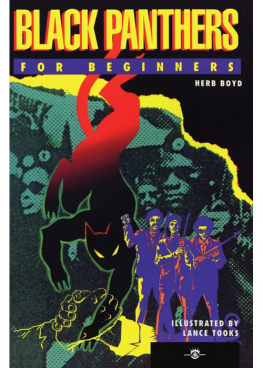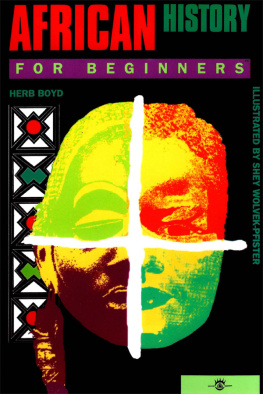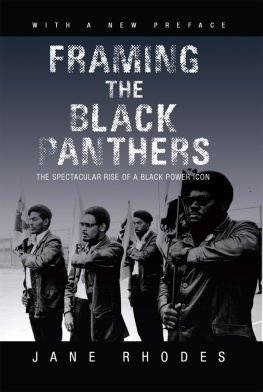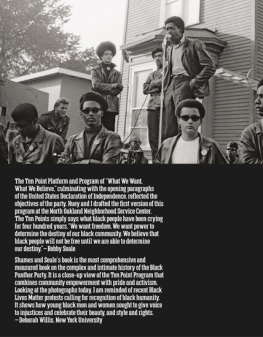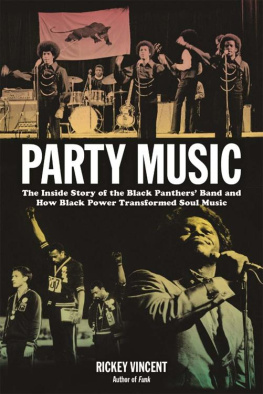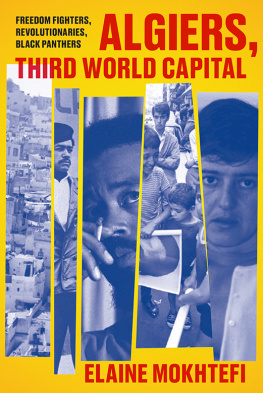

For Beginners LLC
155 Main Street, Suite 211
Danbury, CT 06810 USA
www.forbeginnersbooks.com
Copyright 1995 Herb Boyd
Illustrations Copyright 1995 Lance Tooks
Cover Design 1995 Terrie Dunkelberger
Book Designed by Paul Gordon
This book is sold subject to the condition that it shall not, by way of trade or otherwise, be lent, re-sold, hired out, or otherwise circulated without the publisher's prior consent in any form of binding or cover other than that in which it is published and without a similar condition being imposed on the subsequent purchaser.
All rights reserved. No part of this publication may be reproduced, stored in a retrieval system, or transmitted in any form or by any means, electronic, mechanical, photocopying, recording, or otherwise, without prior permission of the publisher.
A For Beginners Documentary Comic Book
Copyright 2015
Cataloging-in-Publication information is available from the Library of Congress.
ISBN # 978-1-939994-39-4 Trade
Manufactured in the United States of America
For Beginners and Beginners Documentary Comic Books are published by For Beginners LLC.
First Edition
10 9 8 7 6 5 4 3 2 1
www.redwheelweiser.com
www.redwheelweiser.com/newsletter
CONTENTS
To the fallen Panthers who dared to challenge one of the world's most oppressive governments, and especially to Mike Tabor, Connie Matthews, Dhoruba and Tanaquil, and Mumia Abu-Jamal.
--H.B.
My thanks to Writers and Readers for the opportunity to help create this book, to the Black Panthers for giving so much to try and make things better, and to my family for everything else.
--L.T.
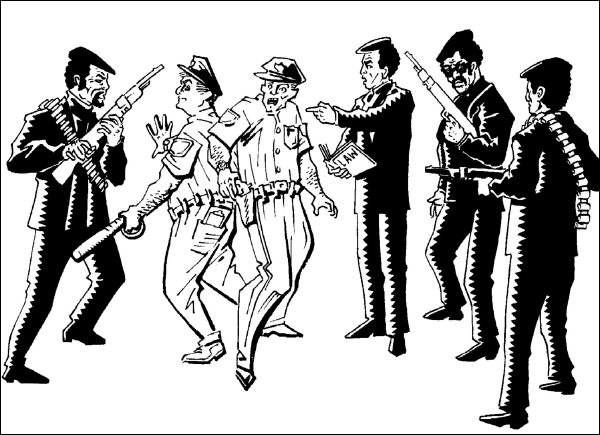
A crowd of onlookers gawked from the sidewalk as four young black men dressed in black leather jackets and berets leaped from a Volkswagen, each of them wielding pump shotguns with bandoliers strapped across their bodies. The young men surrounded two white police officers who had accosted a black man and had him spread-eagled against a building.
The young men did not say a word as the police officers watched them nervously, their eyes fixed on the shotguns.
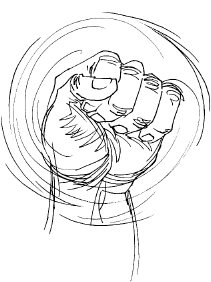
One of the young men held a large law book in his hand, waiting to recite their Constitutional rights to bear arms and to observe the police's actions.
Under the fierce gaze of the young black men the police stopped their arrest procedures, returned to their patrol car and drove off.
This was the Black Panther Party in ideal action. The real storythe whole storywas both more and less heroic.
In the fall of 1966, Huey Newton and Bobby Seale, both students at Merritt Junior College in Oakland, California, decided that they had lost all faith in the government of America.
They were sick of the Federal Government's brutal policy of benign neglect, furious with local politicians more interested in stuffing their own pockets than in helping the poor and hungry, and they were sick to death of the civil rights movement and its out-of-touch old leaders who still counseled moderation and nonviolence after all those years of useless promises. To hell with moderation and nonviolence! It was time to stop singing and to start swinging! It was time to stop talking and to start fighting back.

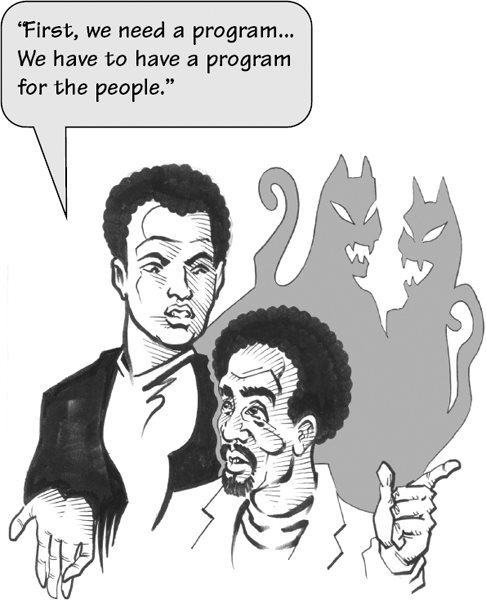
For the next several minutes the two friends hashed out the platform for the Black Panther Party, exchanging ideas, with Newton reciting and Seale taking notes.
In less than an hour they had outlined the Ten Point Program.
1
We want freedom. We want power to determine the destiny of our community. We believe that Black people will not be free until we are able to determine our destiny.
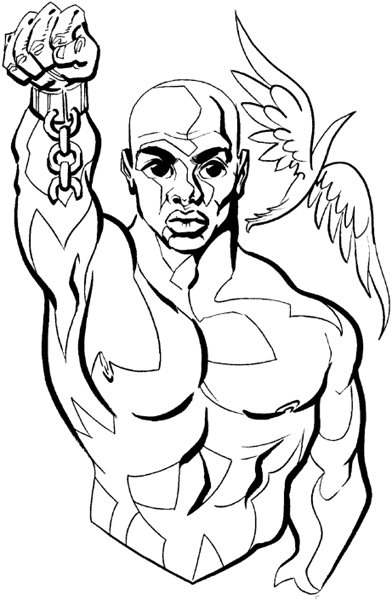
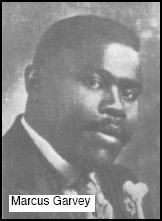
Whether they knew it or not, Newton and Seale's list of demands and beliefs were nearly identical to earlier ten point programs proposed by Marcus Garvey and Elijah Muhammad. Their next task was to decide who did what.
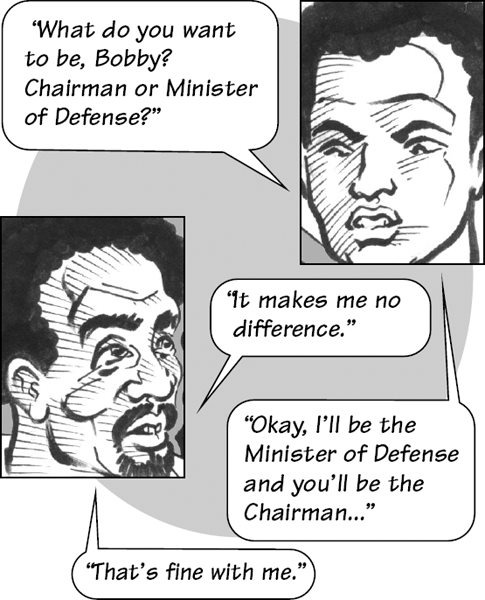
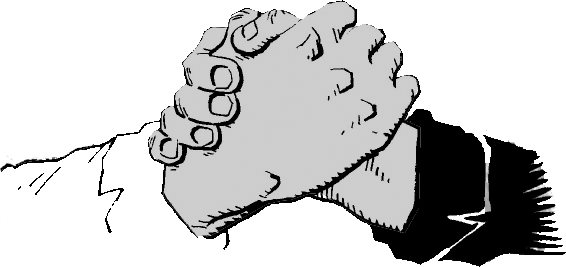
With this agreement the Black Panther Party for Self-Defense was born on October 15, 1966.
The panther was ready to prowl. With stacks of the Ten Point Program under their arms, Newton and Sealelater joined by Little Bobby Hutton, their first recruitbegan passing out the programs in the neighborhoods of Oakland, stopping folks in the streets and arguing their reasons for armed struggle against the pigs. In their vernacular, pigs were cops who harassed Black residents without provocation. To them, the Panthers said,
All Black people were under suspicion.
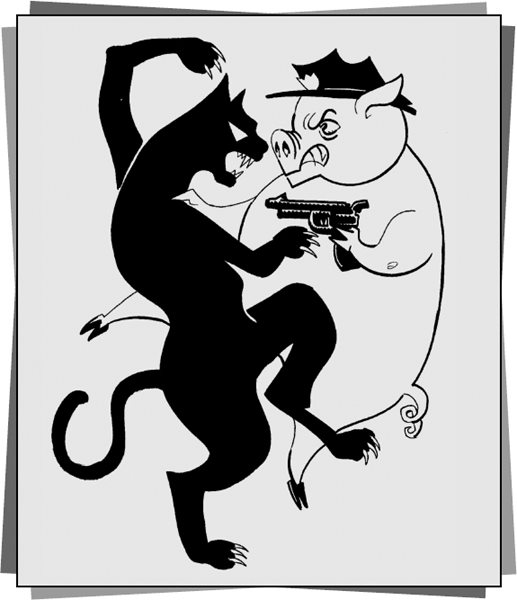
People the trio of Panthers encountered on the streets were stunned by the new group's boldness and wondered why they had chosen a panther as their symbol.
Newton, who was never at a loss for an answer, explained: The nature of the panther is that he never attacks. But if anyone attacks him or backs him into a corner the panther comes up to wipe the aggressor or that attacker out.
Newton and Seale decided that these Panthers needed guns.

Actually, there was nothing new about using the panther as a symbol, or about Black people using guns. Several months before Newton and Seale started the Panthers, the Lowndes County Freedom Party of Alabama had declared the panther the symbol of their party.
A few years before Newton and Seale conceived their plans, militant activist Robert Williams expressed his outrage against racism in his book Negroes with Guns:
All those who dare to attack are going to learn the hard way that the Afro-American is not a pacifist; that he cannot forever be counted on not to defend himself. Those who attack him brutally and ruthlessly can no longer expect to attack him with impunity.

Next page
